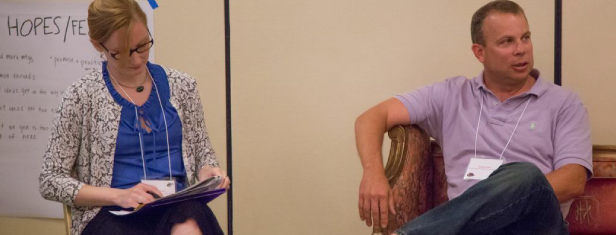Stephan has been the Executive Director of the Oyster Recovery Partnership since 2007. The Oyster Recovery Partnership (ORP) is a non-profit that plans, promotes and implements science-based and sustainable shellfish restoration, aquaculture and wild fishery activities to protect our environment, support our economy and preserve our cultural heritage. ORP, together with its coalition of partners, have planted 5 billion oysters on 1,600 acres of oyster reefs in the Chesapeake Bay and recycled 30,000 bushels of shell through its Shell Recycling Alliance.
What is the current state of oysters in the Chesapeake Bay?
The oyster, long recognized for its distinctive taste, has become a renaissance species in the United States. After a century of decline, the oyster has assumed a unique role in the nation’s culture, inspiring scientists, environmentalists, entrepreneurs, and foodies. The increased focus on the Chesapeake Bay oyster reflects the speed and depth of the national movement. In the Chesapeake, the nation’s largest estuary, the oyster plays a vital role in habitat restoration, with the growing understanding that oyster reefs purify waterways and create ideal habitats for a diverse marine environment. Scientific advances have made it possible to produce over a billion oysters each year to restore existing reefs and establish new ones. Aquaculture developments support a rapidly growing oyster farming industry, which is putting oysters on more plates and strengthening consumer interest with no additional pressure on the wild population. The public is newly invested in oysters, as programs to raise oysters for restoration and thriving shell recycling programs connect the public, scientific, and economic communities.
What is the Oyster Recovery Partnership currently working on?
The Oyster Recovery Partnership, along with its many partners, is helping to drive the aforementioned advances in shellfish production and restoration, aquaculture, and shell recycling. We are undertaking the largest restoration program of its kind in Harris Creek on Maryland’s Eastern shore. By reestablishing 370 acres of oyster reefs, we have built the nation’s largest shell recycling enterprise and are looking to work with other groups to expand it even further. Additionally, we are offering unique training opportunities that are enabling fishermen to produce their own oysters.
How did you get into restoration work?
About ten years ago, I wanted to get involved within the environmental sector, an industry that I was passionate about. I was fortunate to have been able to secure a job within the Maryland Department of Natural Resources, which enabled me help expand public awareness of the efforts that were underway to restore the Chesapeake Bay, a body of water on which I spent many years sailing. When the opportunity arose to work at the Oyster Recovery Partnership (ORP), I jumped at it and haven’t looked back since. This year, the organization is celebrating its 20th anniversary. Much has changed over the last two decades and we are making significant headway with our oyster recovery efforts, shell recycling, and aquaculture programs, but there is still much work left to do.
What is your commitment to sustainability?
Today, many marine fish and shellfish populations have declined due in part to historical overfishing, fisheries management decisions, and ecosystem degradation. With future projections indicating even higher demand for those fish stocks, it is our collective duty to responsibly manage the fisheries that are thriving and protect those that are not using the best science available, to balance decisions that support both the fisheries’ economics and the ecosystems, and to properly communicate our findings to the public and other stakeholder groups.
What is one major challenge that you're dealing with, and how are you managing it?
I recognize that approaching fisheries management issues requires a management philosophy that balances the need to maintain a viable population through fisheries conservation management practices with a commercial fishery that is deeply rooted in our culture, and is often divisive and complex. Having worked at the Maryland Department of Natural Resources and with other federal agencies, commercial fishing organizations, recreational and charter fishing groups, environmental groups, and seafood distributors and restaurants, I know from experience that decisions need to be based on sound science that is relevant to all stakeholders. At the Oyster Recovery Partnership, we balance all of these variables when we make decisions and implement them. Often, we look for new technology solutions and ways to become more cost effective and efficient, because, like in any business, maintaining the status quo is not good enough.
ORP’s partner Flying Dog Brewery recently completed a video that does a great job summarizing Maryland’s oyster recovery efforts.
View it here.




